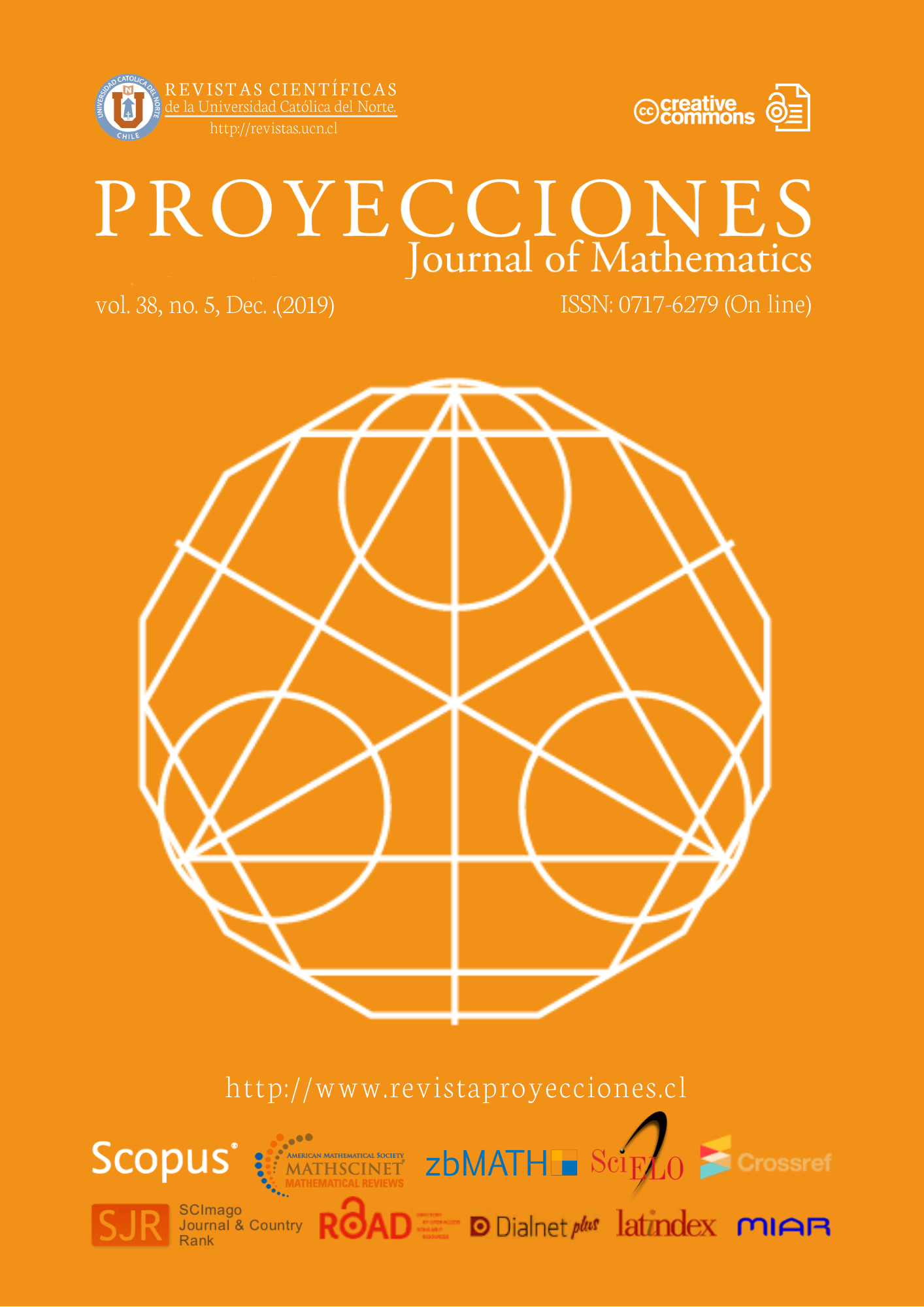Zero forcing in Benzenoid network
DOI:
https://doi.org/10.22199/issn.0717-6279-2019-05-0064Keywords:
Zero forcing set, Pyrene networks, Circum-pyrene networks, Circum-trizene networksAbstract
A set S of vertices in a graph G is called a dominating set of G if every vertex in V (G)\S is adjacent to some vertex in S. A set S is said to be a power dominating set of G if every vertex in the system is monitored by the set S following a set of rules for power system monitoring. The power domination number of G is the minimum cardinality of a power dominating set of G. A dynamic coloring of the vertices of a graph G starts with an initial subset S of colored vertices, with all remaining vertices being non-colored. At each discrete time interval, a colored vertex with exactly one non-colored neighbor forces this non-colored neighbor to be colored. The initial set S is called a forcing set (zero forcing set) of G if, by iteratively applying the forcing process, every vertex in G becomes colored. The zero forcing number of G, denoted Z(G), is the minimum cardinality of a zero forcing set of G. In this paper, we obtain the zero forcing number for certain benzenoid networks.
References
AIM Minimum Rank – Special Graphs Work Group, “Zero forcing sets and the minimum rank of graphs”, Linear algebra and its applications, vol. 428, no. 7, pp. 1628–1648, Apr. 2008, doi: 10.1016/j.laa.2007.10.009 .
D. Burgarth, V. Giovannetti, L. Hogben, S. Severini and M. Young, “Logic circuits from zero forcing”, Natural computing, vol. 14, no. 3, pp. 485-490, Sep. 2015, doi: 10.1007/s11047-014-9438-5.
M. Gentner, L. Penso, D. Rautenbach and U. Souza, “Extremal values and bounds for the zero forcing number”, Discrete applied aathematics, vol. 214, pp. 196-200, Dec. 2016, doi: 10.1016/j.dam.2016.06.004.
T. Haynes, S. Hedetniemi, S. Hedetniemi, and M. Henning, “Power domination in graphs applied to electrical power networks”. SIAM journal on discrete mathematics, vol. 15, no. 4, pp. 519-529, 2002, doi: 10.1137/S0895480100375831.
K. Benson, D. Ferrero, M. Flagg, V. Furst, L. Hogben, V. Vasilevska and B. Wissman, “Zero forcing and power domination for product graphs”, Feb. 2017. arXiv:1510.02421v4.
J. Anitha and I. Rajasingh “Power domination parameters in honeycomb-like networks,” in Applied mathematics and scientific computing. Trends in mathematics. B. Rushi, R. Sivaraj, B. Prasad, M. Nalliah, and A. Reddy Eds. Cham: Birkhäuser, 2019, pp. 613–621, doi: 10.1007/978-3-030-01123-9_61.
J. Quadras, K. Balasubramanian and K. Arputha Christy, “Analytical expressions for Wiener indices of n-circumscribed pericondensed benzenoid graphs”, Journal of mathematical chemistry, vol. 54. no. 3, Mar. 2016, doi: 10.1007/s10910-016-0596-9.
Published
How to Cite
Issue
Section
-
Attribution — You must give appropriate credit, provide a link to the license, and indicate if changes were made. You may do so in any reasonable manner, but not in any way that suggests the licensor endorses you or your use.
- No additional restrictions — You may not apply legal terms or technological measures that legally restrict others from doing anything the license permits.












